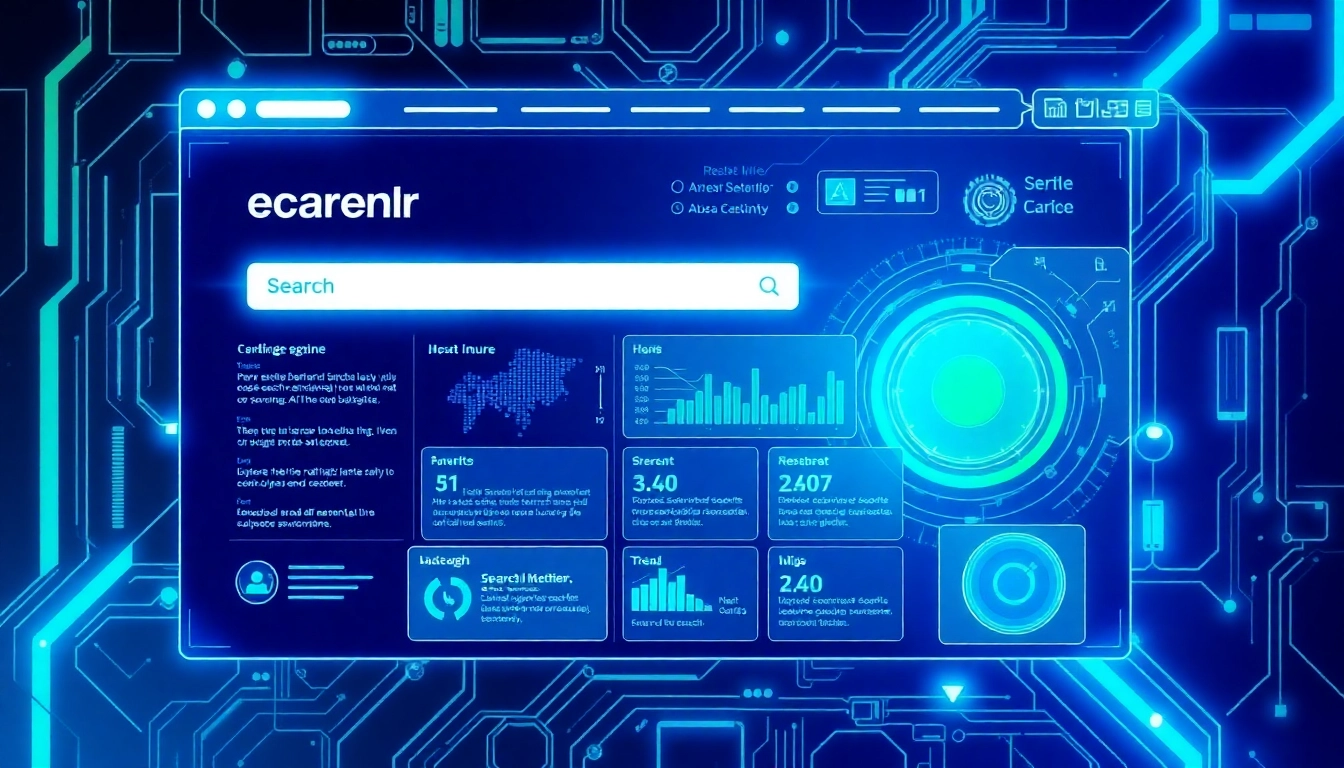What is Agentic AI?
Agentic AI represents a significant leap forward in the realm of artificial intelligence, characterized by its capacity to operate autonomously, making decisions and executing tasks without ongoing human oversight. As these systems become increasingly sophisticated, they are equipped to tackle complex, multi-layered problems that would be challenging for traditional AI systems. The concept of Agentic AI essentially revolves around the idea of independent action toward defined goals.
Definition and Key Characteristics
Agentic AI can be described as AI technologies that autonomously pursue specific objectives, leveraging reasoning, planning, and decision-making capabilities. These systems differ markedly from traditional AI, which typically relies on continuous human input and feedback. Key characteristics of Agentic AI include:
- Autonomy: The ability to function without human intervention, making decisions based on the data available.
- Goal-Oriented: Designed to achieve specific outcomes or objectives rather than merely providing information or performing simple tasks.
- Adaptability: Capable of learning and improving through experience, allowing them to adjust strategies based on environmental changes.
- Multi-Step Problem Solving: Equipped to tackle complex issues that require strategic planning over multiple stages.
How Agentic AI Differs from Traditional AI
Traditional AI, typically categorized under supervised or unsupervised machine learning, operates on vast datasets but often requires human direction for training and deployment. In contrast, Agentic AI takes this a step further by incorporating self-management capabilities. The primary distinctions include:
- Decision-Making Framework: While traditional AI uses algorithms that may require extensive human tuning, Agentic AI employs advanced decision-making protocols that process information and reach conclusions independently.
- End-User Interaction: Traditional AI systems often require explicit user commands, whereas Agentic AI systems can infer user intentions and execute tasks autonomously.
- Learning Mechanisms: Agentic AI can learn contextual cues and update its operational parameters based on situational assessments, enhancing its effectiveness over time.
Real-World Applications and Use Cases
The real-world applications of Agentic AI are as diverse as they are transformative. Some notable use cases include:
- Healthcare: Implementing AI systems that can autonomously manage patient care paths, predict medical outcomes, and even schedule treatments.
- Finance: Automating trading strategies and risk assessments while adapting to market changes in real-time.
- Manufacturing: Using Agentic AI for supply chain management, optimizing production workflows, and predictive maintenance of machinery.
- Customer Service: Implementing chatbot systems capable of handling customer inquiries autonomously and learning from past interactions to improve future service.
The Technology Behind Agentic AI
Core Components of Agentic AI Systems
The efficacy of Agentic AI lies in its foundational technologies, which can be dissected into several core components:
- Machine Learning Algorithms: These algorithms facilitate the processing and analysis of vast datasets, enabling autonomous learning and decision-making capabilities.
- Natural Language Processing (NLP): Aids in understanding user commands and querying vast databases to deliver accurate and contextually relevant information.
- Robust Data Infrastructure: Essential for collecting and storage of data that feeds into the learning models, allowing continuous refinement and improvement of the AI system.
- Feedback Loops: Mechanisms that allow the AI to reflect on its decisions’ outcomes and refine its approach to achieving better results.
Machine Learning and Decision-Making Processes
At the heart of Agentic AI lies machine learning, a field that focuses on the development of algorithms that enable computers to learn from and interpret data. Through supervised and unsupervised learning models, Agentic AI can enhance its problem-solving capabilities. Decision-making processes in Agentic AI involve:
- Data Ingestion: Collecting data from various sources to inform the AI’s decision-making.
- Analysis and Pattern Recognition: Using algorithms to identify trends and make predictions based on historical data.
- Action Execution: Carrying out tasks based on the analytical insights gained, often without human intervention.
The Role of Data in Enhancing Performance
Data plays a pivotal role in the performance of Agentic AI systems. High-quality, diverse data sets are crucial for training and refining AI models. The relationship between data and performance can be summarized through several points:
- Quality Over Quantity: Data that is clean, well-labeled, and relevant helps in building more sophisticated models.
- Contextual Relevance: Data that reflects the real-world scenarios the AI will encounter improves its adaptability and decision-making efficiency.
- Continuous Learning: The ability of an Agentic AI to learn from new data ensures its continued effectiveness in changing environments.
Benefits of Implementing Agentic AI
Efficiency Improvements in Various Industries
Agentic AI has the potential to significantly enhance efficiency across different sectors. By automating complex processes and reducing the need for human oversight, organizations can achieve:
- Streamlined Operations: Workflows can be optimized, allowing teams to focus on more strategic initiatives.
- Increased Output: Automation of repetitive tasks leads to higher productivity rates and output quality.
- Real-Time Adaptability: Businesses can respond dynamically to changing conditions, ensuring decision-making reflects current realities.
Cost Reduction and Resource Optimization
Integrating Agentic AI can also lead to substantial cost savings and resource optimization. Key aspects include:
- Reduced Labor Costs: Automating tasks that previously required human labor minimizes personnel expenses.
- Lower Operational Costs: Efficient processes decrease waste and resource consumption.
- Enhanced Resource Allocation: By freeing human resources from mundane tasks, companies can deploy talent strategically in areas where it’s most effective.
Enhancing User Experience through Autonomy
Agentic AI systems can significantly improve user experience by providing personalized service and support tailored to individual needs. Benefits include:
- 24/7 Availability: AI systems can operate continuously, providing assistance or services regardless of time constraints.
- Personalized Interactions: AI systems can learn from user behavior and preferences, enhancing user engagement and satisfaction.
- Proactive Support: Agentic AI can predict user needs and address them before they are articulated, enhancing overall service experience.
Challenges and Considerations
Ethical Implications of Autonomous AI
The rise of Agentic AI brings with it a series of ethical considerations. Key issues include:
- Accountability: As AI begins to make decisions independently, determining accountability for errors or harmful outcomes becomes complex.
- Bias and Fairness: Ensuring AI systems are free from bias is crucial to avoid perpetuating discrimination through decision-making.
- Transparency: AI decision processes can be opaque; fostering user trust requires understanding how decisions are made.
Technical Limitations and Risks
Despite its advantages, Agentic AI comes with technical limitations and risks that organizations must address:
- System Reliability: High dependence on technology raises concerns regarding system failures that might lead to operational disruptions.
- Data Vulnerability: As AI systems operate on vast amounts of data, security risks must be managed to protect sensitive information.
- Inherent Complexity: Developing and maintaining sophisticated AI systems can be daunting and require significant technical expertise.
Developing Regulatory Standards for Agentic AI
As Agentic AI continues to evolve, there’s a compelling need for robust regulatory frameworks that govern its application and development. Important aspects include:
- Establishing Ethical Standards: Crafting guidelines to ensure ethical considerations are integrated into AI systems.
- Compliance Regulations: Setting forth legal requirements pertaining to data privacy, security, and transparency.
- Interdisciplinary Collaboration: Engaging technologists, ethicists, and policymakers in shaping the future of AI governance.
Future Trends in Agentic AI Development
Innovation and Continuous Learning in AI
The future of Agentic AI will likely be marked by continuous innovation. As the technology evolves, we can expect to see:
- Advanced Algorithm Development: New algorithms that further amplify learning capabilities and reduce bias.
- Interoperability: Enhanced capabilities for multiple AI systems to work together, leading to more cohesive and integrated solutions.
- Expansion into New Domains: Agentic AI’s application will broaden, venturing into areas such as environmental monitoring and government services.
Predictions for the Next Decade
Looking ahead, it is anticipated that Agentic AI will:
- Transform Industries: Major disruptions across various sectors as organizations adopt more autonomous systems.
- Enhance Decision-Making: Leader reliance on data-driven insights will become the norm as AI systems become more integrated into strategic planning.
- Global Standards and Protocols: A move toward establishing international standards for AI operation and ethics, facilitating cross-border AI applications.
Preparing for the Integration of Agentic AI in Business
Businesses must proactively prepare for the integration of Agentic AI into their operations. This includes:
- Investment in Training: Upskilling employees to work alongside AI systems and understand their outputs.
- Strategic Implementation Plans: Crafting detailed plans to ensure seamless integration of AI into existing business processes.
- Stakeholder Engagement: Involving all stakeholders in the decision-making process regarding AI integration for greater acceptance and trust.



